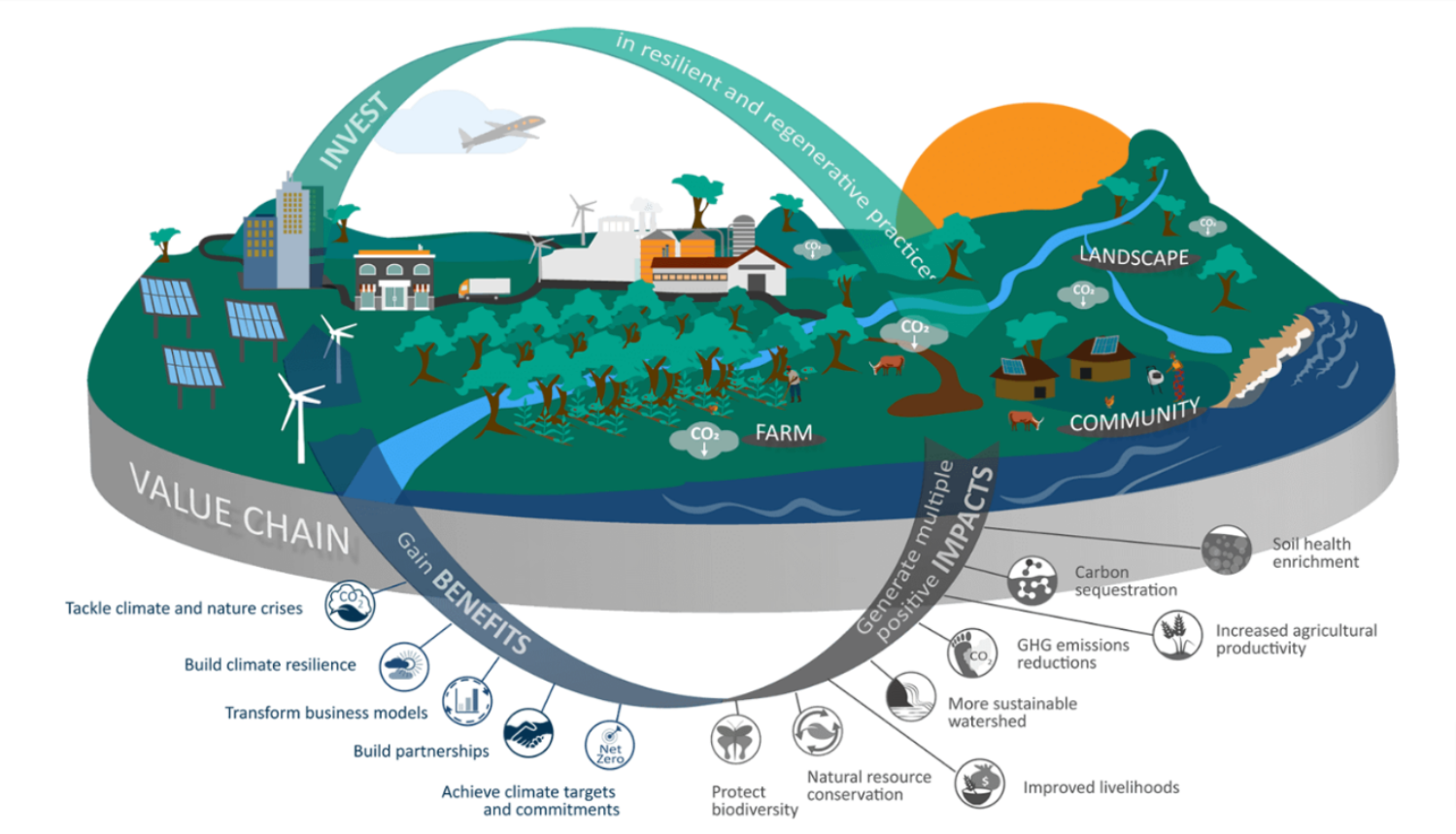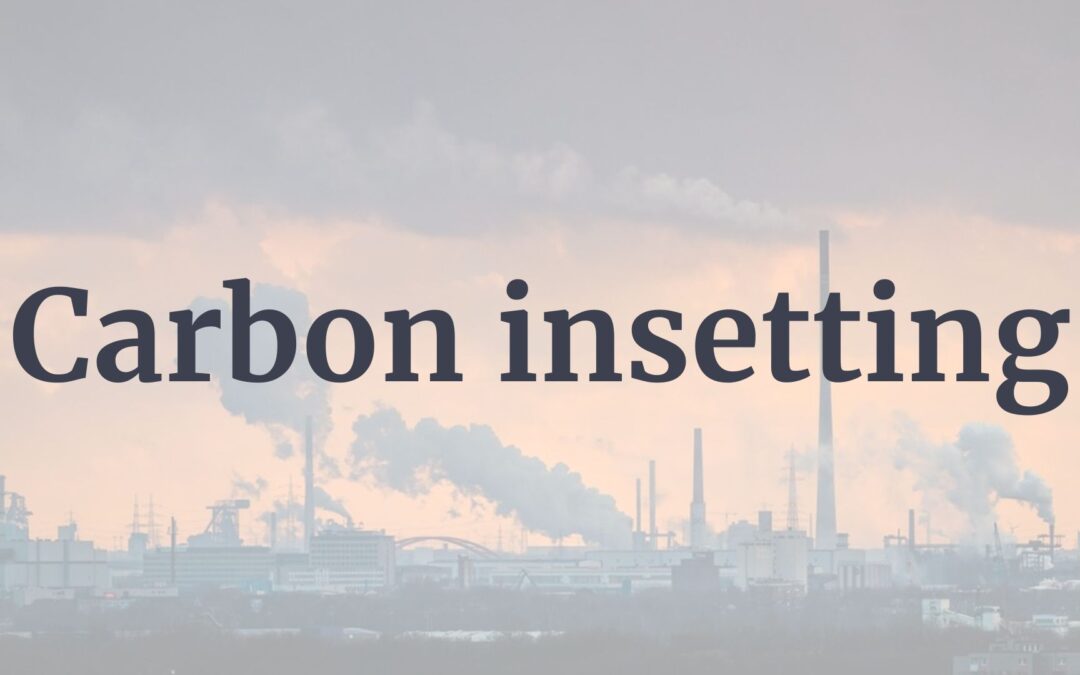Today, less than 20% of large companies are committed to a Net Zero initiative. Faced with growing climate challenges, organizations are being forced to act to radically reduce the impact of their greenhouse gas (GHG) emissions. One of the emerging strategies for achieving this goal is carbon insetting.
Unlike carbon offsetting, insetting focuses on reducing emissions within the company’s own value chain. This not only reduces indirect emissions (Scope 3), but also generates positive impacts for local communities.
What is carbon insetting?
Insetting is a strategy for decarbonizing an organization’s value chain. This strategy is mainly aimed at large companies, as it requires considerable financial resources.
The concept of insetting describes the financing of GHG emission reduction projects by an organization within its own value chain. By directly financing these projects, the organization is in a position to actively reduce its indirect emissions (scope 3).

Image source: The International Platform for Insetting
In their quest to reduce GHG emissions, organizations are quickly limited when it comes to acting on their indirect emissions. Indeed, Scope 3 emissions are often beyond their direct control, since they are not generated internally. Scope 3 emissions come from their upstream and downstream business partners. Insetting is therefore a relevant strategy for overcoming compressible Scope 3 emissions, while generating positive impacts for local communities.
Insetting vs. offsetting: what’s the difference?
What are the main differences between offsetting and insetting strategies?
Offsetting aims to finance GHG reduction, avoidance or sequestration projects that are not directly related to the Scope 3 emissions of the organization providing the funding. So we mitigate elsewhere in order to offset the emissions we produce locally. More concretely, for each tonne of CO2 equivalent reduced by a project, a carbon credit is generated and can be purchased by the organization wishing to offset its own emissions. These types of environmental projects can take place anywhere in the world.
Insetting, like offsetting, aims to finance ecological projects. However, as explained earlier, these projects are implemented within the organization’s value chain. This is integrated carbon offsetting. This strategy is mainly aimed at large companies, and enables them to take greater responsibility for mitigating their own emissions, using a “ top-down ” approach.
Both strategies are relevant for organizations wishing to achieve carbon neutrality. If you’re wondering which strategy is best, consider the following analogy:
“ Is it a good idea to offer to water your neighbor’s lawn during hot spells if the grass in your own garden is turning yellow and you only have a limited amount of water available for watering? Isn’t it a good idea to water your own lawn and use the remaining water elsewhere afterwards?
Carbon offsetting is no less relevant a strategy; “ watering your neighbor’s lawn ” remains an action with a positive impact, but it should not represent an organization’s first mitigation effort. In fact, offsetting should always be used once all emission reduction efforts have been implemented and the remaining incompressible emissions are to be offset.

What are the advantages?
There are four main advantages to carbon insetting:
- An integrated approach: All emission reduction projects are stimulated and financed by the parent organization and developed within its own value chain, as opposed to offsetting. This long-term approach allows the company’s vision, values and objectives to be integrated within the organization’s value chain.
- Strengthened business ties: Working closely with business partners to reduce their carbon emissions builds more sustainable relationships that go beyond financial transactions.
- Enhanced corporate reputation: Investing in the decarbonization of one’s own value chain is a direct action that demonstrates an organization’s real commitment to the environment. By being directly responsible for the emissions of their own value chain, organizations that adopt an insetting strategy can enjoy an enhanced reputation and be seen as leaders in climate action.
- Multiple, large-scale positive impacts: Insetting helps to achieve long-term carbon neutrality (i.e., decarbonization of activities), particularly with regard to Scope 3 emissions. This strategy also impacts a large number of business partners, mitigating operational risks and improving supply chain resilience to climate change.
How Will Solutions supports carbon inserting
As carbon experts, and using our community-based business model, Will Solutions is a strategic ally for any organization wishing to choose the carbon insetting strategy to reduce their supply chain emissions.
Our unique solution enables you to stimulate, qualify, quantify and value the carbon reductions of the business partners that make up your value chain.
Contact Will Solutions today to find out how carbon insetting can transform your climate strategy.

Mathis Chanvillard
GHG Auditor
Author & Editor

